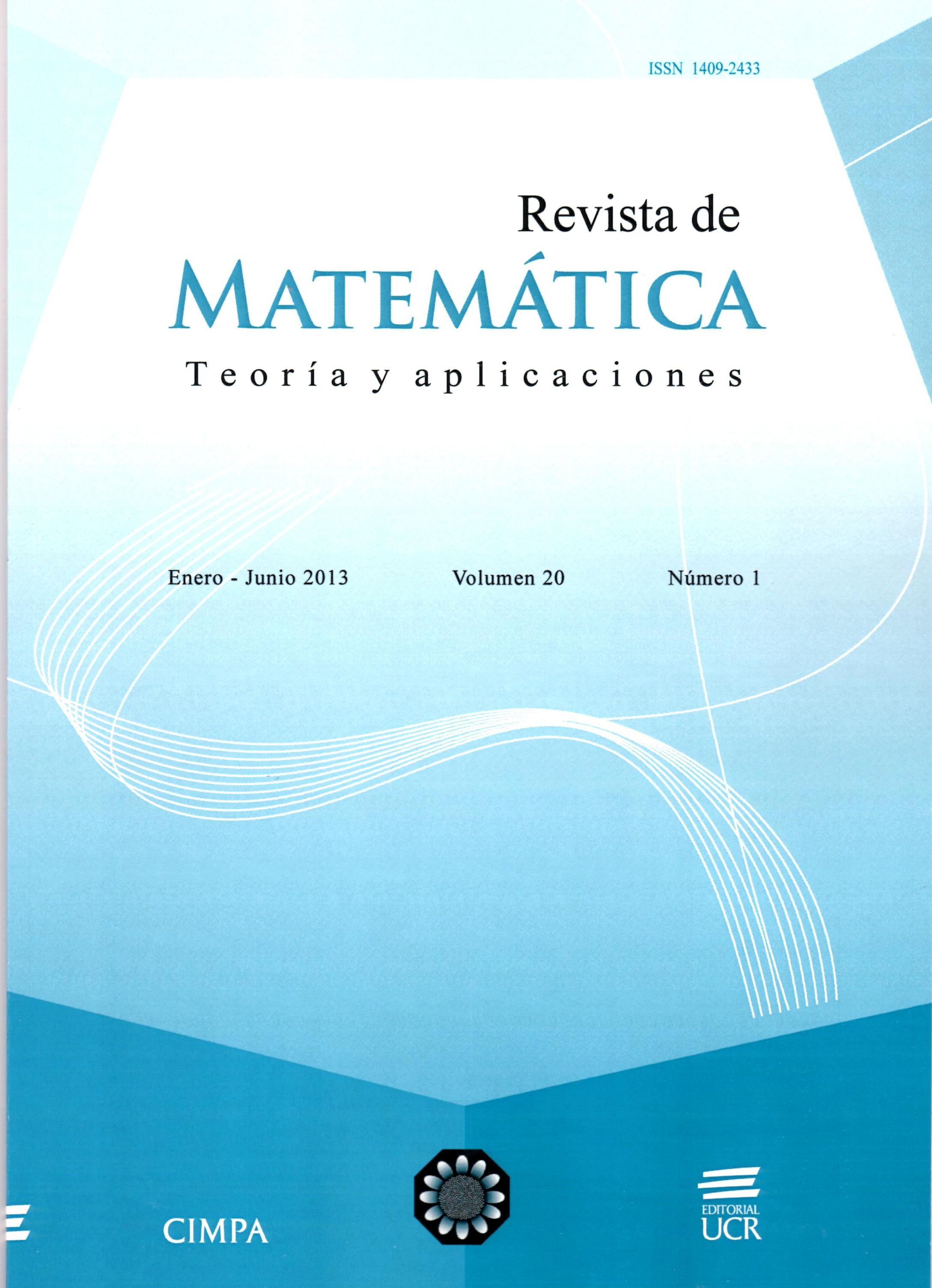Resumen
El método de la ecuaciones de patrón (PEM) han sido extendidospara resolver problemas de scattering en ondas electromagnéticas por medio de partículas con superficie de impedancia mista anisotrópica. Luego, las condiciones de frontera de impedancia anisotrópica se imponen en la superficie lateral de la partícula, y condiciones de frontera de impedancia isotrópica se imponen en caras finales de la partícula. El método se formula para cuerpos axialmente simétricos.Se presentan las características del scattering de los cuerpos con superficies laterales artificiales suaves y duras. Se lleva a cabo la comparación de los resultados con los que se obtienen con otros métodos. También se presenta el análisis de la tasa de convergencia del algoritmo numérico PEM y la precisión de los cálculos numéricos. Finalmente se hace la comparación de nuestros datos con los resultados numéricos obtenidos antes con el PEM en ausencia de la impedancia anisotrópica.
Citas
Kyurkchan, A.G. (2000) “Solution of vector scattering problems by the pattern equation method”, Journ Comm Tech and Electron 45: 970–975.
Kyurkchan, A.G.; Demin. D.B. (2002) “Electromagnetic wave diffraction from impedance scatterers with piecewise–smooth boundaries”, Journ Comm Tech and Electron 47: 856–863.
Kyurkchan, A.G.; Demin. D.B. (2004) “Simulation of wave scattering by bodies with an absorbing coating and Black Bodies”, Technical Physics 49: 165–173.
Kyurkchan, A.G.; Demin. D.B. (2004) “Pattern equation method for solving problems of diffraction of electromagnetic waves by axially dielectric scatterers”, JQSRT 89: 237–255.
Kyurkchan, A.G.; Demin. D.B.; Orlova, N.I. (2007) “Solution of scattering problems of electromagnetic waves from objects with dielectric covering using pattern equation method”, Journal of Commun. Techn. and Electron 52: 131–40.
Kyurkchan, A.G.; Demin. D.B.; Orlova, N.I. (2007) “Solution based on the pattern equation method for scattering of electromagnetic waves by objects coated with dielectric materials”, JQSRT 106: 192-202.
Kyurkchan, A.G.; Demin. D.B. (2009) “Solution of problem of electromagnetic waves scattering on inhomogeneously layered scatterers using pattern equation method”, JQSRT 110: 1345–1355.
Kyurkchan, A.G.; Demin. D.B. (2011) “Solution of problems of electromagnetic wave scattering by bodies with an anisotropic impedance with the help of the pattern equation method”, Journal of Commun. Techn. and Electron 56: 134–141.
Kyurkchan, A.G. (1999) “Excitation of a periodic ribbed structure possessing the properties of an artificially hard surface by a thread of current”, Journal of Commun. Techn. and Electron. 44: 731–737.
Kildal, P.-S. (1988) “Definition of artificially soft and hard surfaces for electromagnetic waves”, Electron. Lett. 24(3): 168–170.
Kildal, P.-S. (1990) “Artificially soft and hard surfaces in electromagnetics”, IEEE Transactions on Antennas and Propagation 38(10): 1537–1544.
Papas, C.H. (1965) Theory of Electromagnetic Wave Propagation. McGraw–Hill, New York.
Hizal, A.; Marincic, A. (1970) “New rigorous formulation of electromagnetic scattering from perfectly conducting bodies of arbitrary shape”, Proc. IEEE 117(8): 1639–1647.
Millar, R.F.; Burrows, M.L. (1969) “Rayleigh hypothesis in scattering problems”, Electron. Lett. 5: 416–418.
Kyurkchan, A.G. (1992) “A new integral equation in the diffraction theory”, Soviet Physics Doklady 37(7): 338–340.





